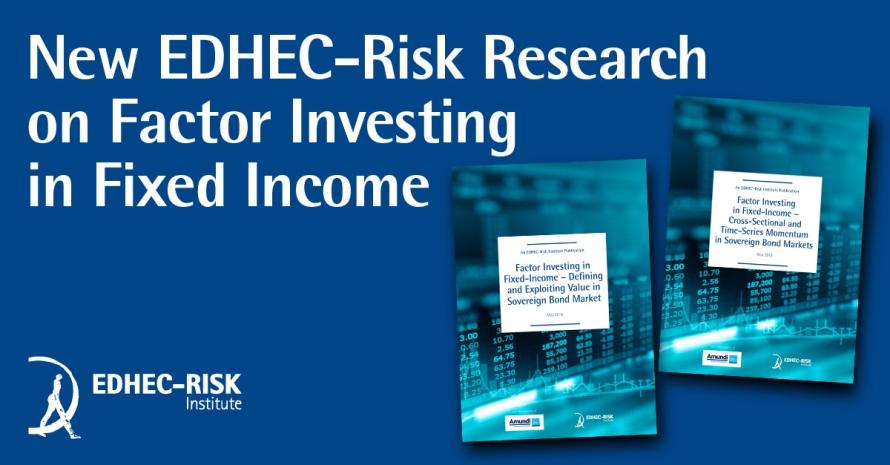A complete analysis of the 2 most popular fixed income factors: value & momentum

Two new studies produced as part of the Amundi research chair on “ETF, Indexing and Smart Beta Investment Strategies” focus on the two factors that explain a large fraction of differences in the cross-section of bond returns, namely “value” and “momentum”, using economically justified proxies for these attributes.
In the publication entitled "Factor Investing in Fixed-Income – Defining and Exploiting Value in Sovereign Bond Markets", the authors propose a definition of value in Treasury bonds that is more satisfactory than those found in the recent literature, and that allows for statistically significant and economically relevant predictions of cross-sectional excess returns.
- They give an explanation of the profitability of the strategy built using their value signal by linking it to market liquidity and Treasury market volatility.
- Their value pricing factor exploits the differences between the market and the theoretical values of Treasury bonds, where value is ascertained using an economically-motivated term-structure model.
- They provide an explanation for this strong link using arguments similar to what can be found in the recent literature on liquidity in Treasuries.
In a companion paper entitled "Factor Investing in Fixed-Income – Cross-Sectional and Time-Series Momentum in Sovereign Bond Markets”, they undertake a systematic, security-level analysis of momentum and reversal strategies in US Treasuries, covering more than 40 years of data.
- They find that look-back and investment periods exist for which momentum times series strategies give rise to statistically and economically significant Sharpe ratios.
- They find that, after adjusting for duration, the reversal cross-sectional strategy has even larger Sharpe ratios, and is profitable over a wider range of look-back and investment periods.
- They find an explanation for this finding in the mean reverting properties of the yield-curve slope.
- They show that the duration-adjusted reversal cross-sectional strategy can be successfully implemented in a long-only fashion.
Commenting on this research, Riccardo Rebonato, Professor of Finance at EDHEC-Risk Institute, EDHEC Business School, said “Return predictability in Treasury Bond market is currently one of the most exciting areas for smart-beta investment. The papers mentioned above are two contributions in a much wider research programme at EDHEC, focused on the cross-sectional and time series predictability in the fixed-income space”.
Bruno Taillardat, Head of Smart Beta & Factor Investing at Amundi, added his thoughts: "The increasing adoption of Smart Beta and factor-based solutions, particularly in the area of fixed income investment, represents an exciting challenge for asset managers seeking to design the right solutions to address clients' needs. To further enhance Amundi's strong engagement to helping investors meet their asset allocation goals, our partnership with the EDHEC-Risk Institute is a key element to strengthen our leadership in providing education and research tools."
In a companion paper released in May entitled Factor Investing in Sovereign Bond Markets - A Time-Series Perspective, the same authors focused on the two factors that explain a large fraction of differences over time in bond returns, namely the “level” or “slope” of the yield curve.



